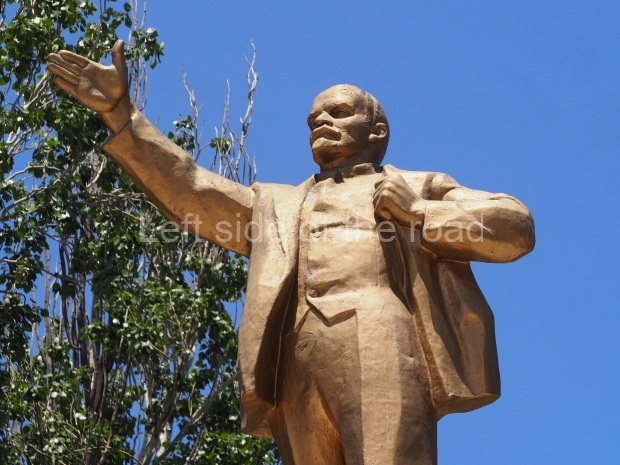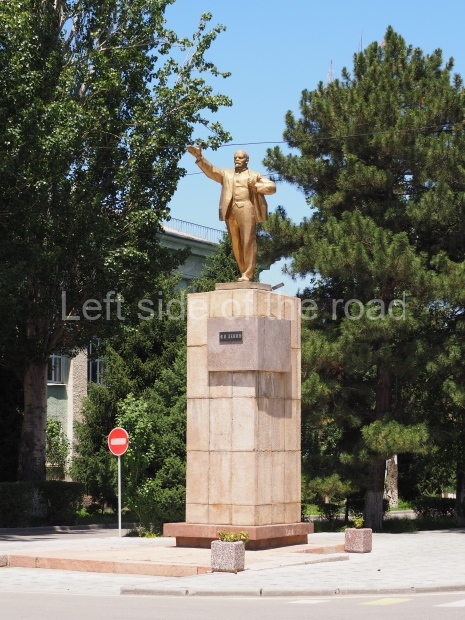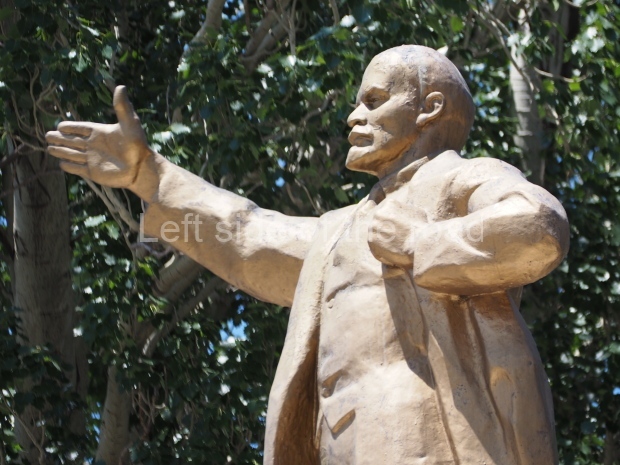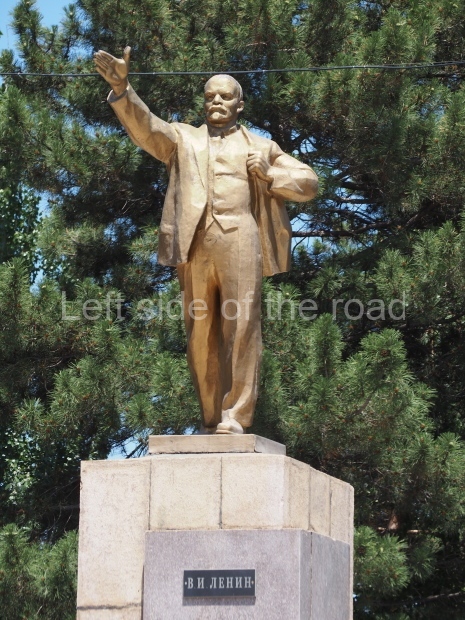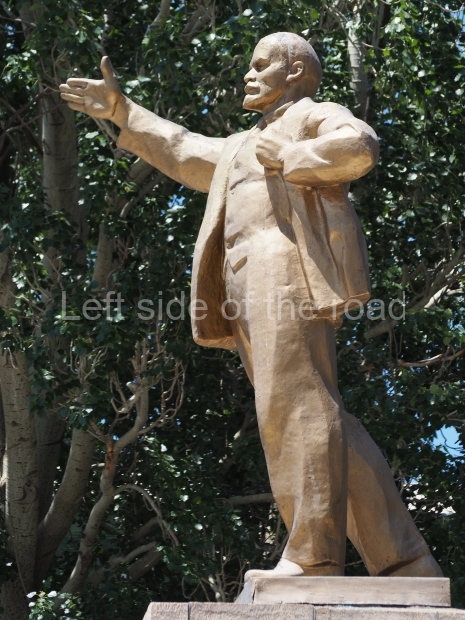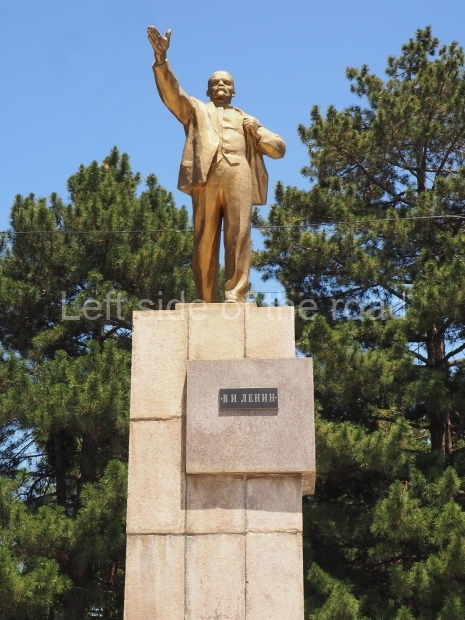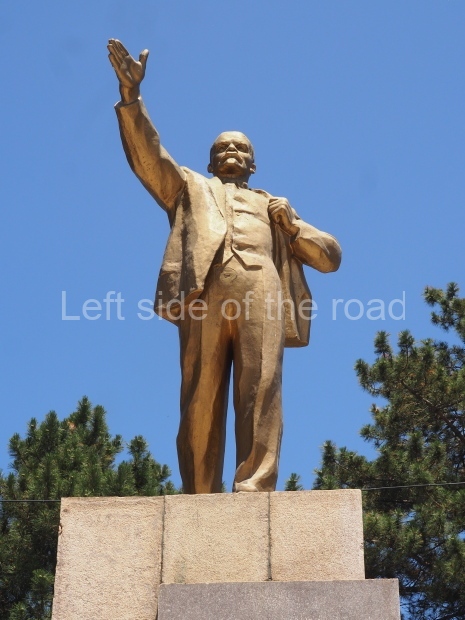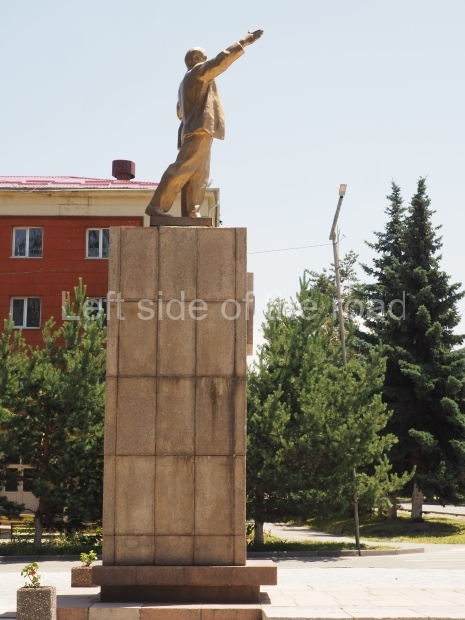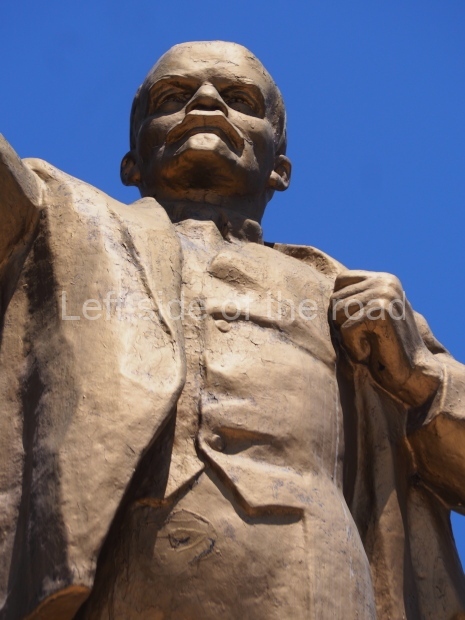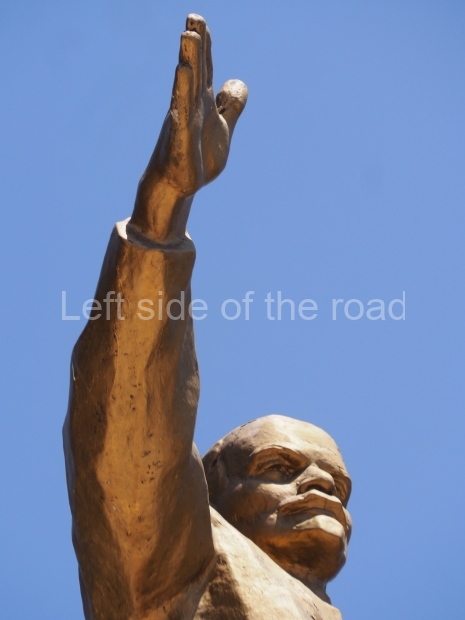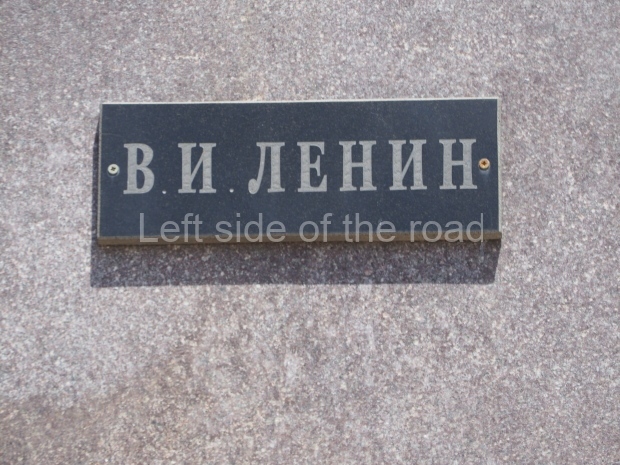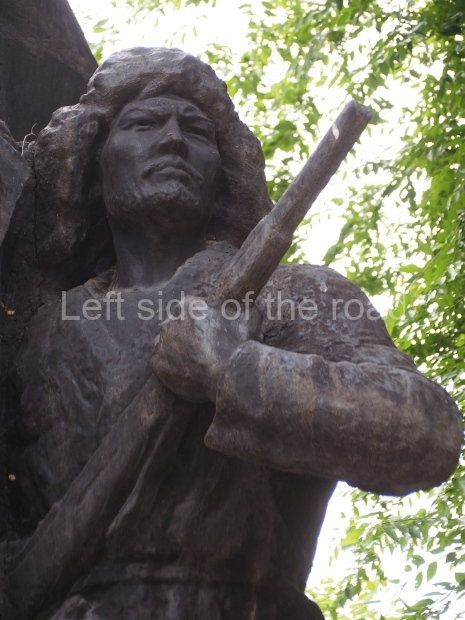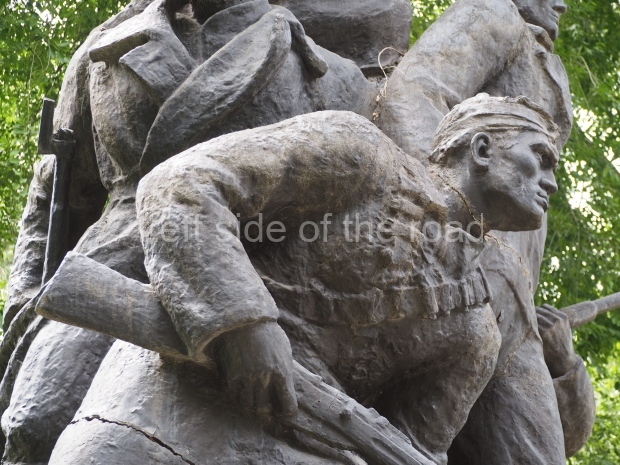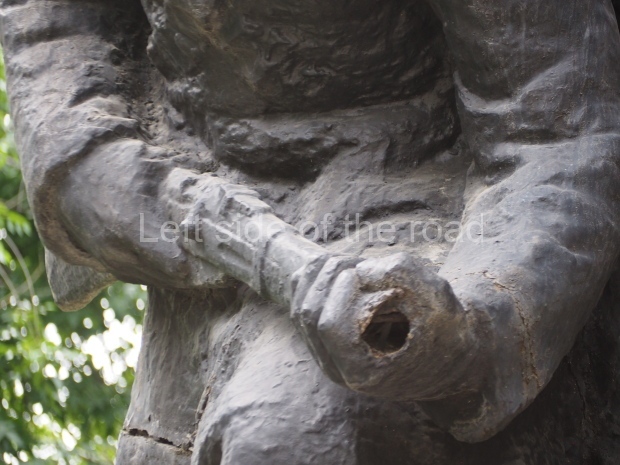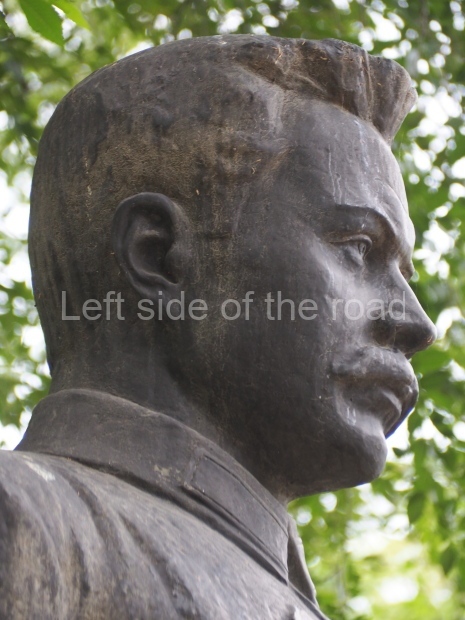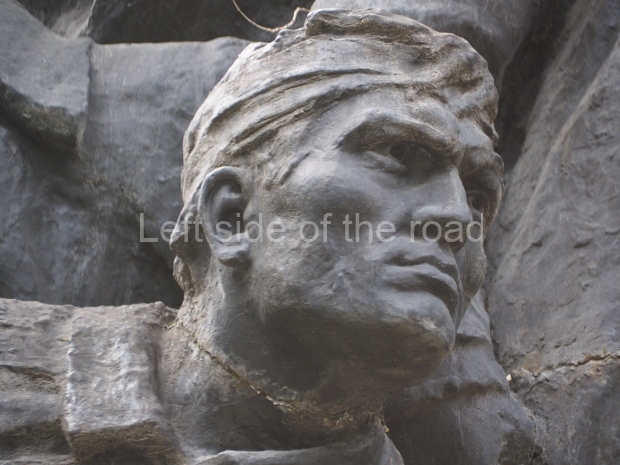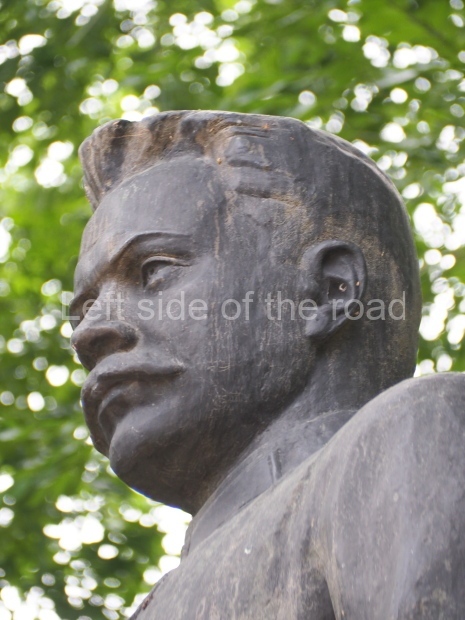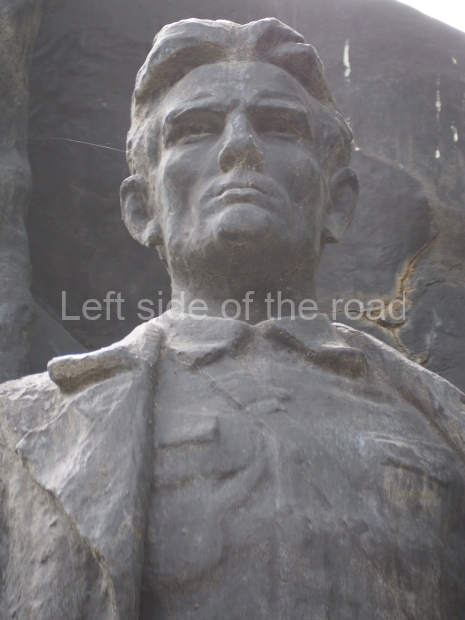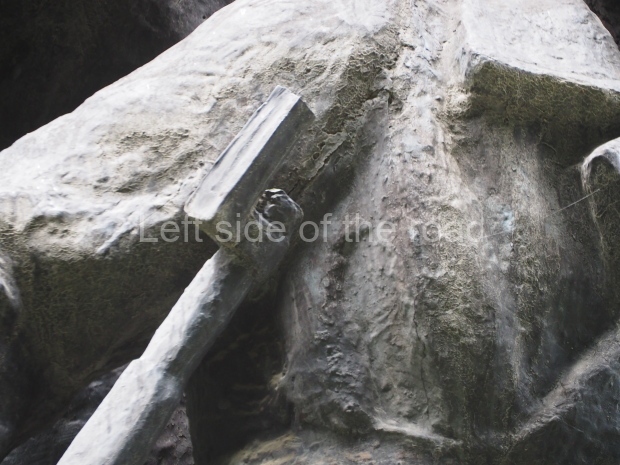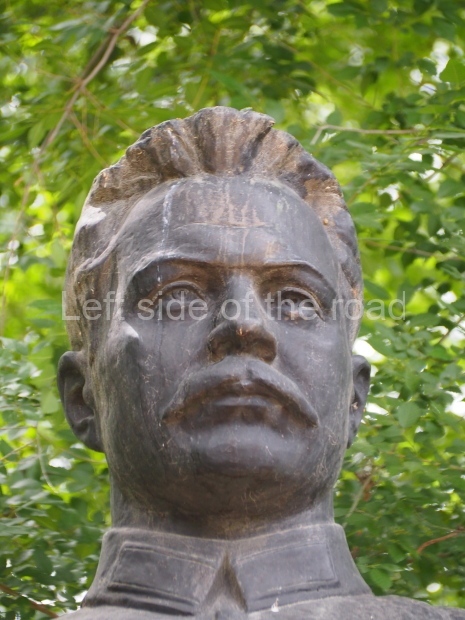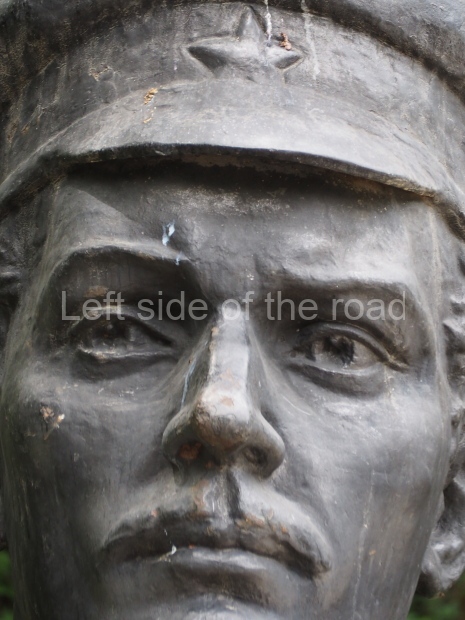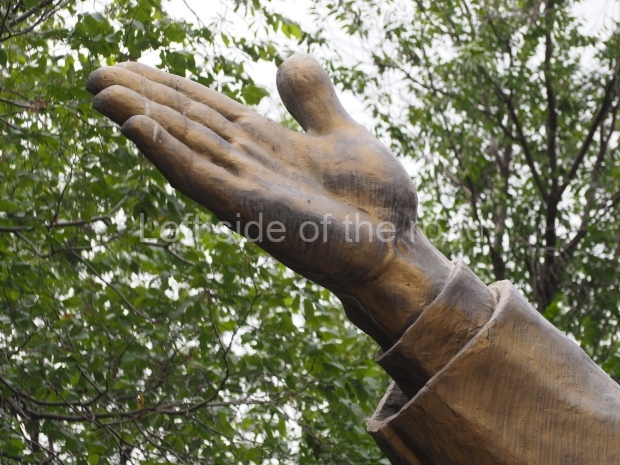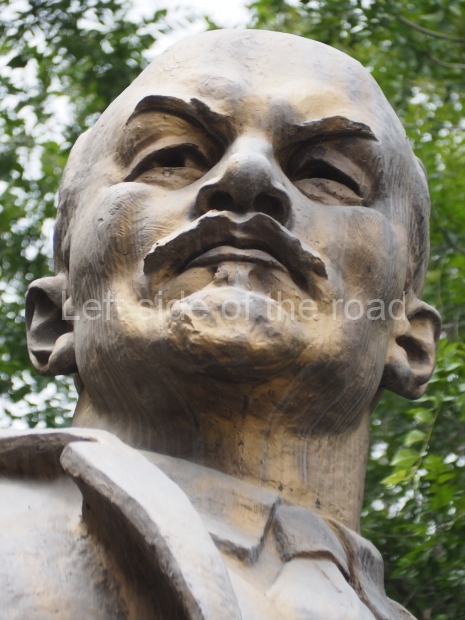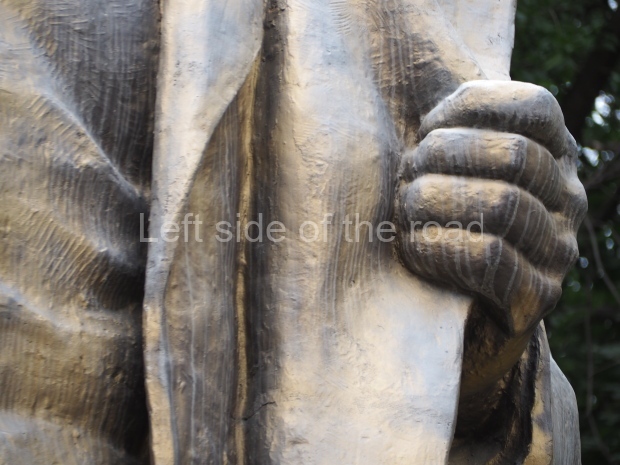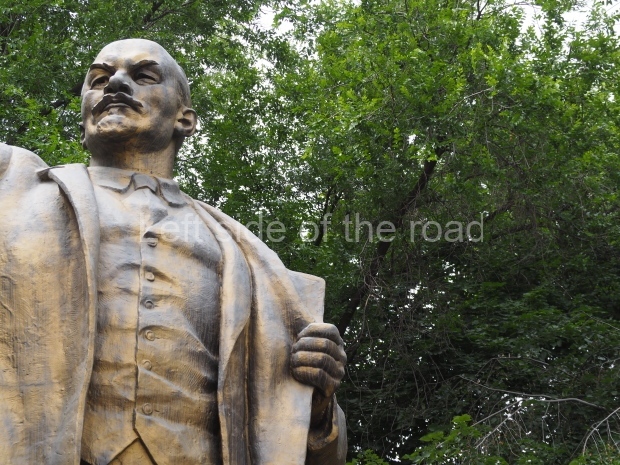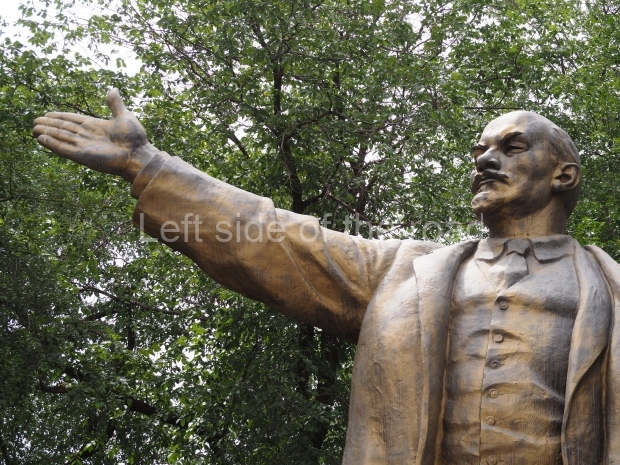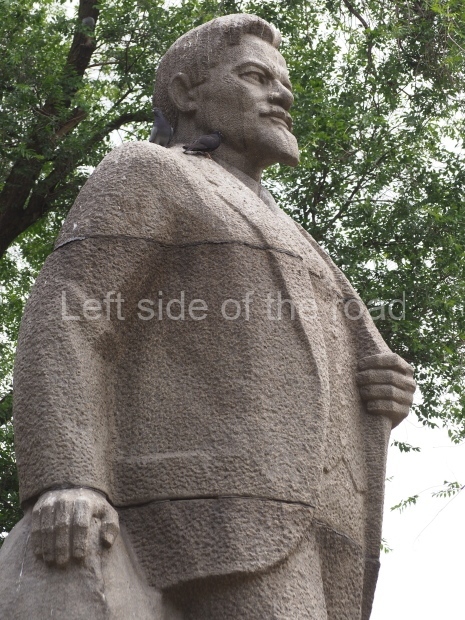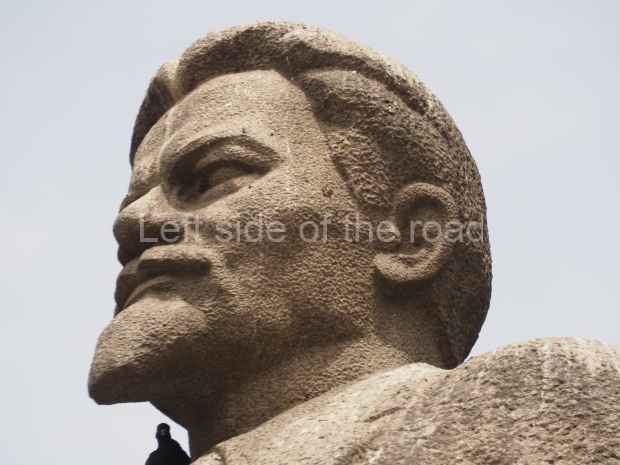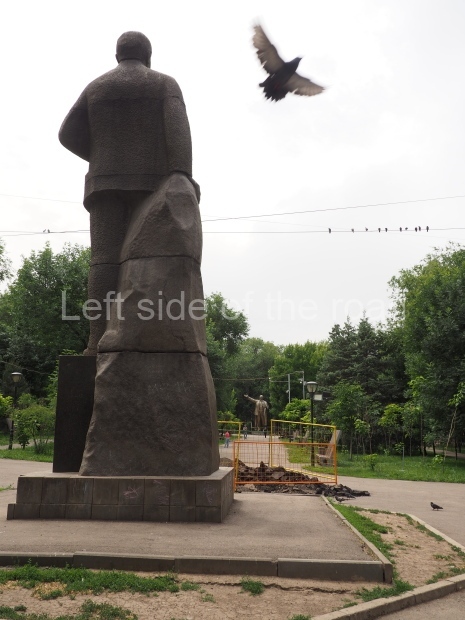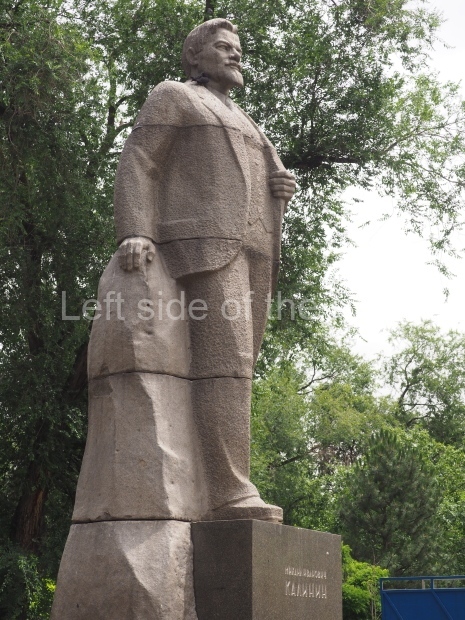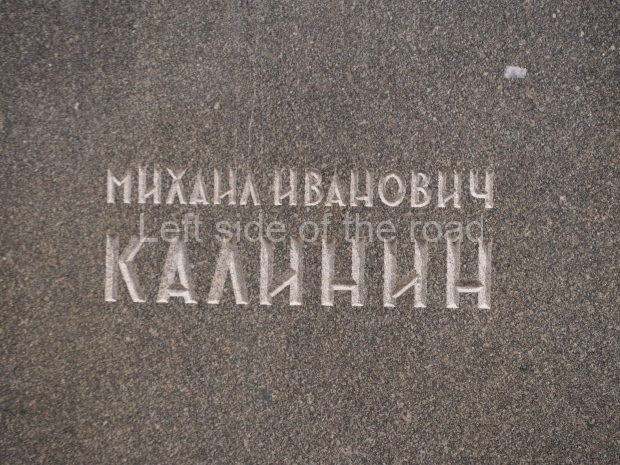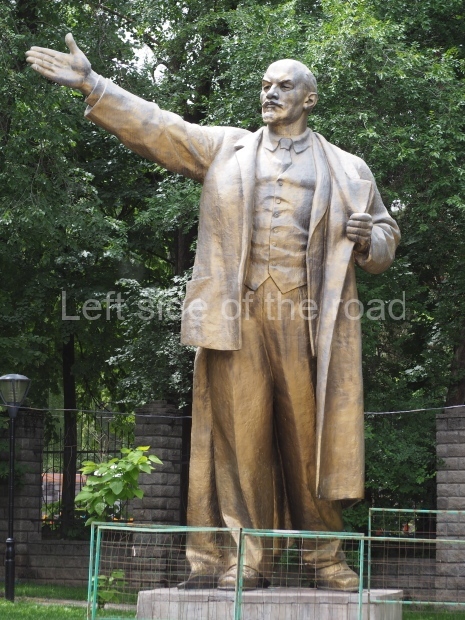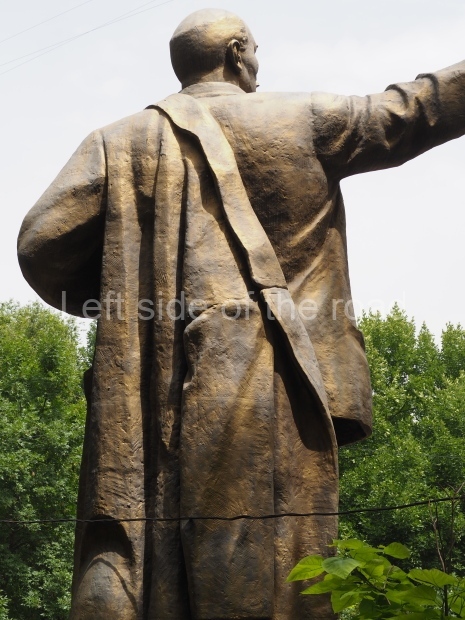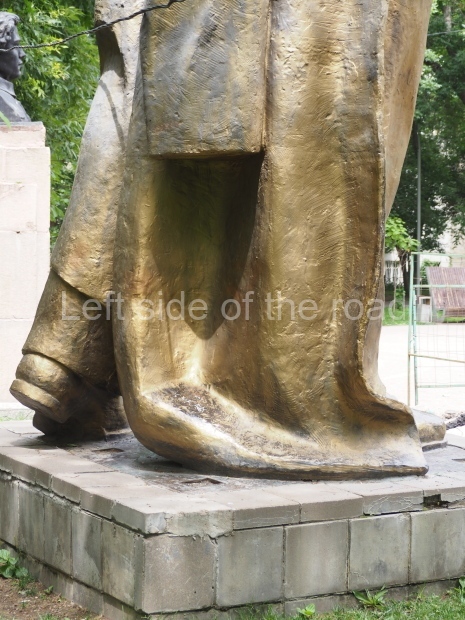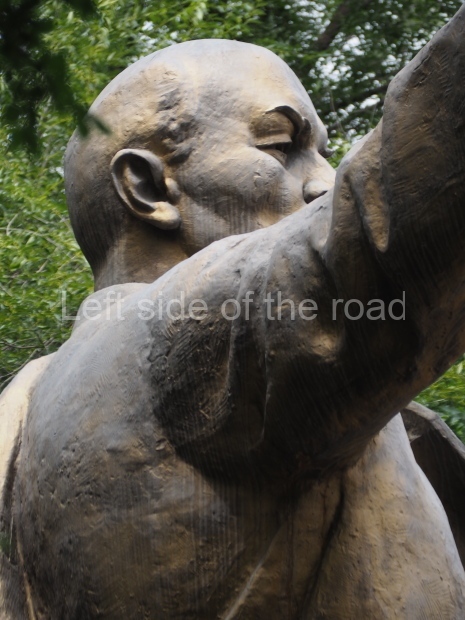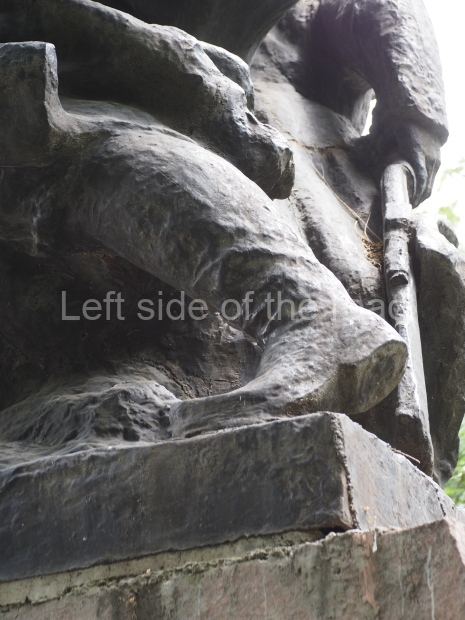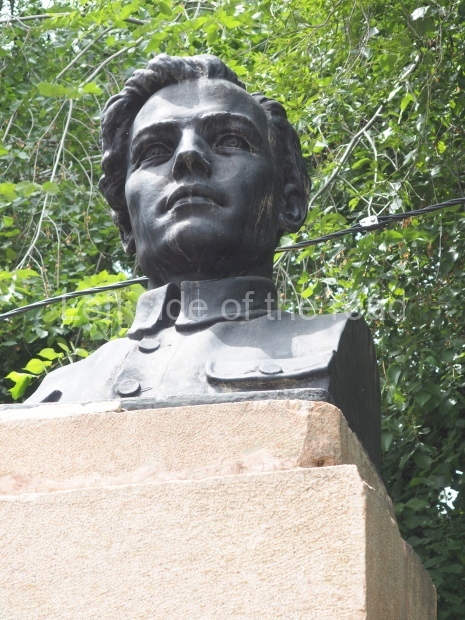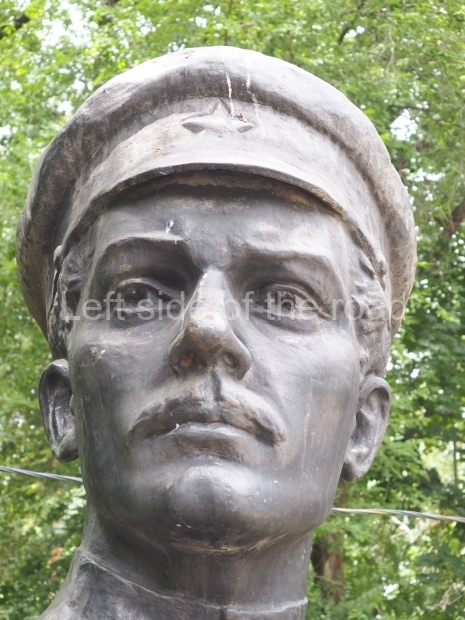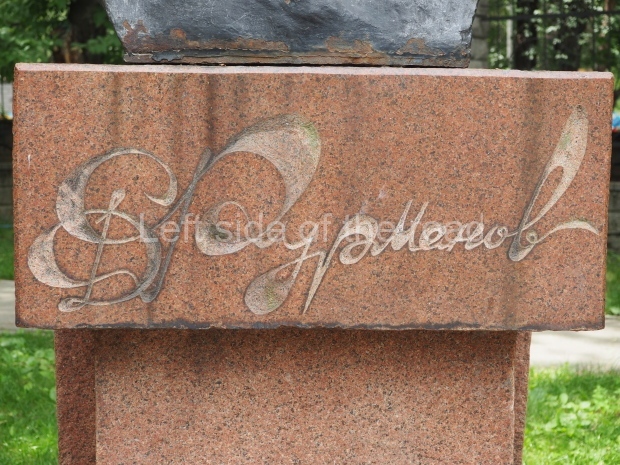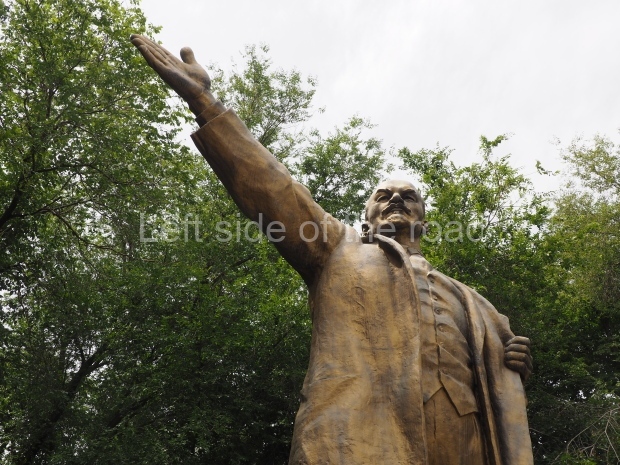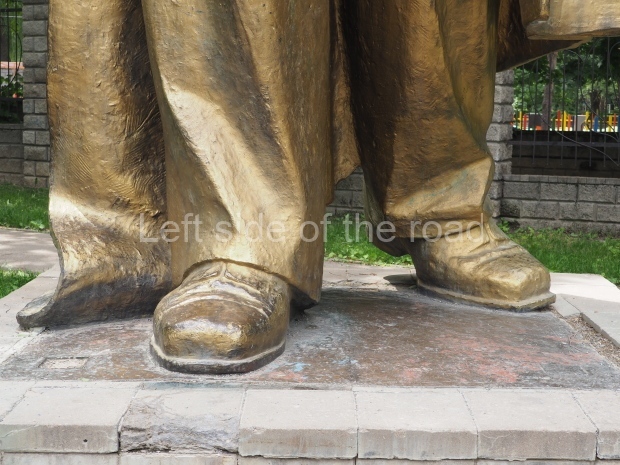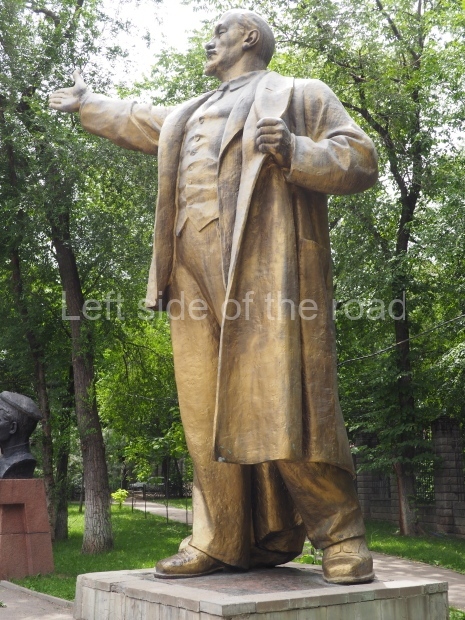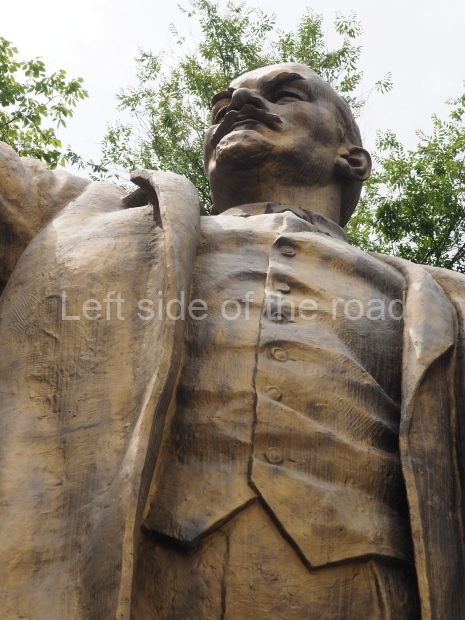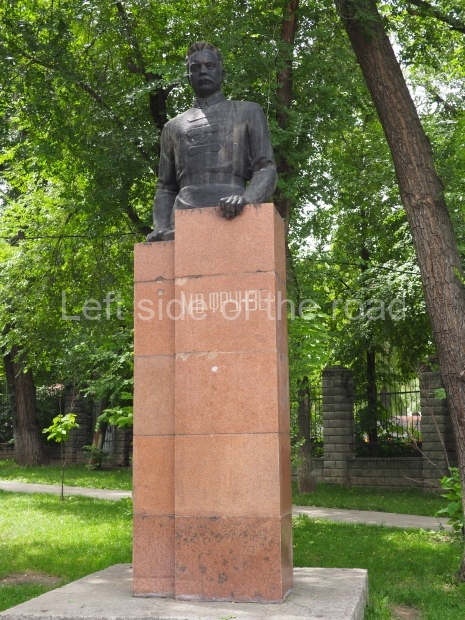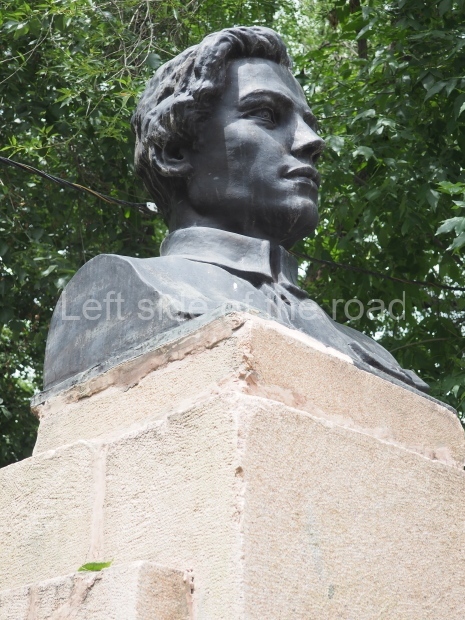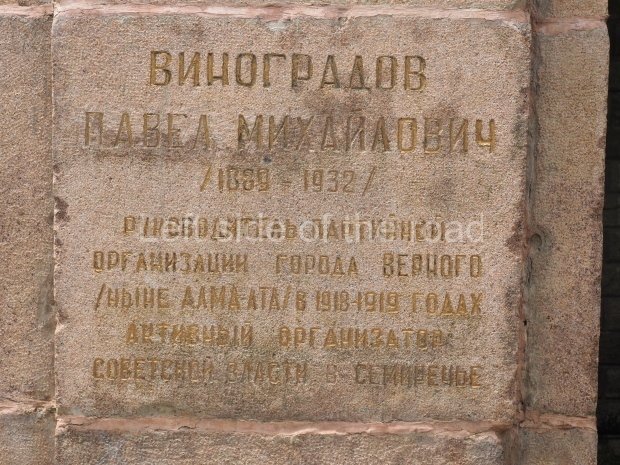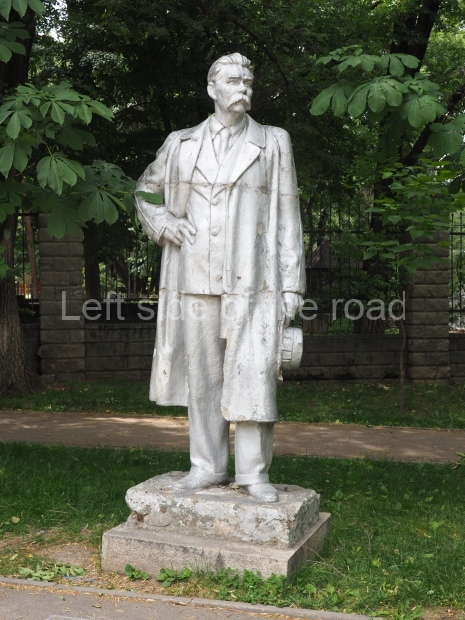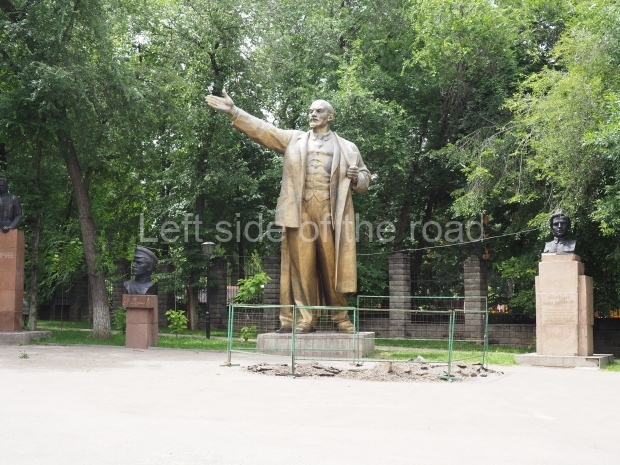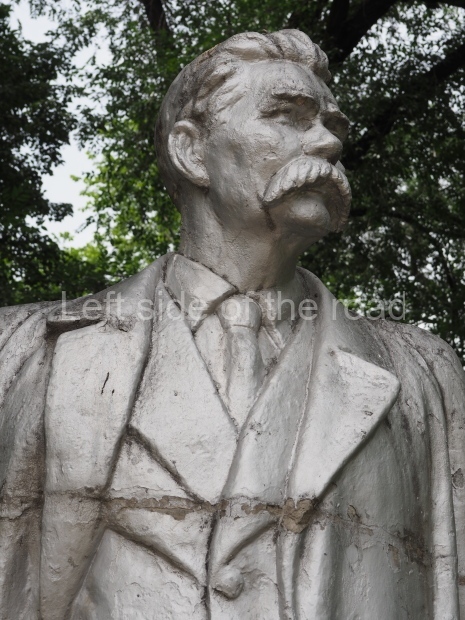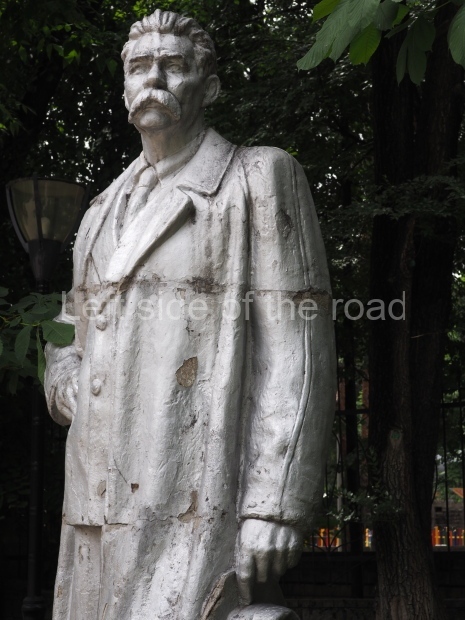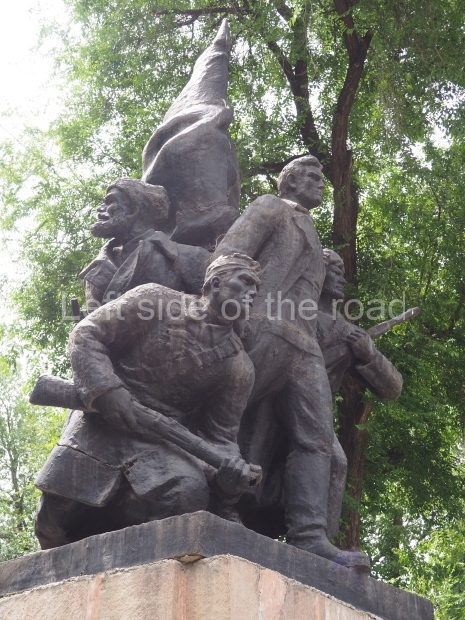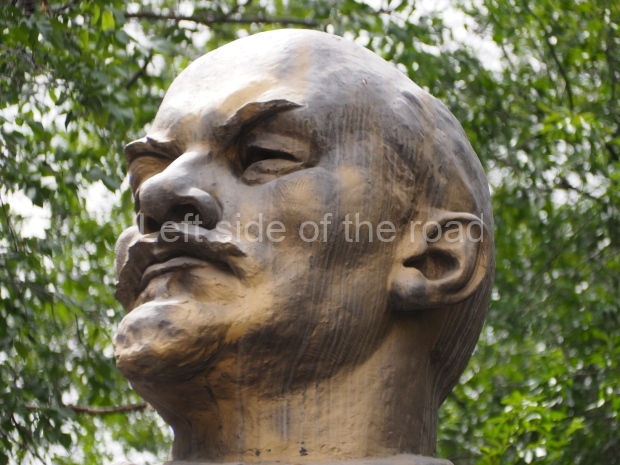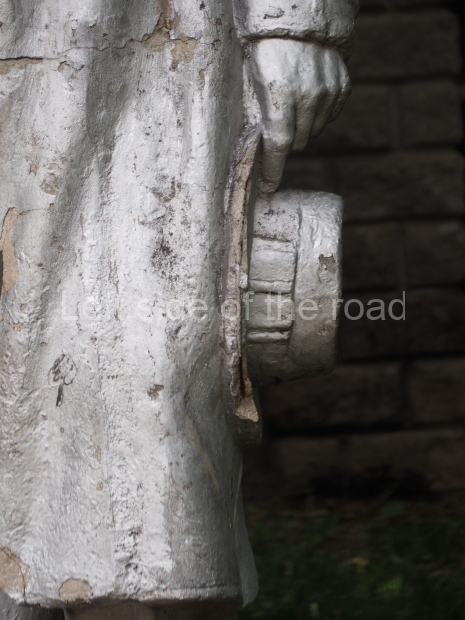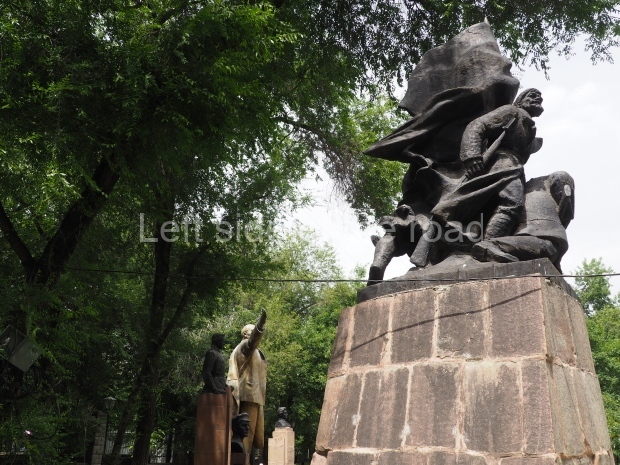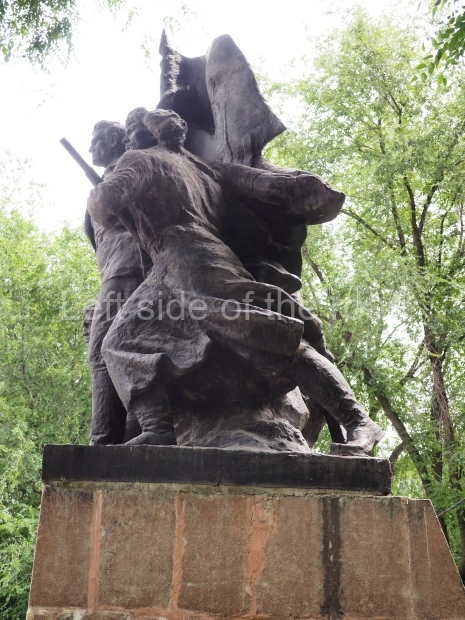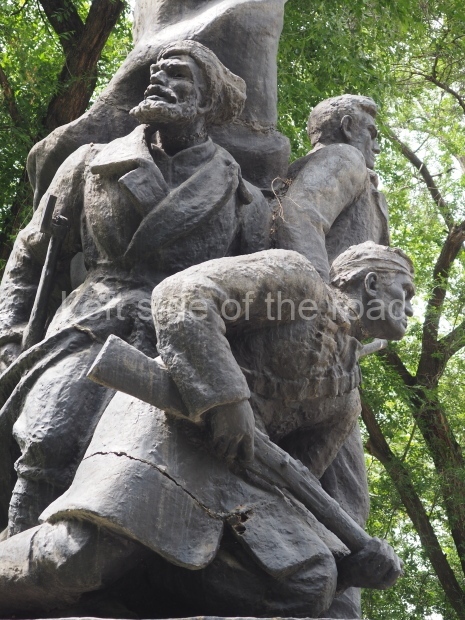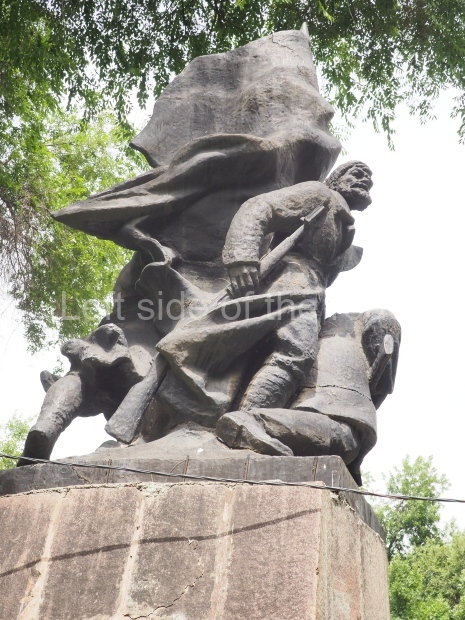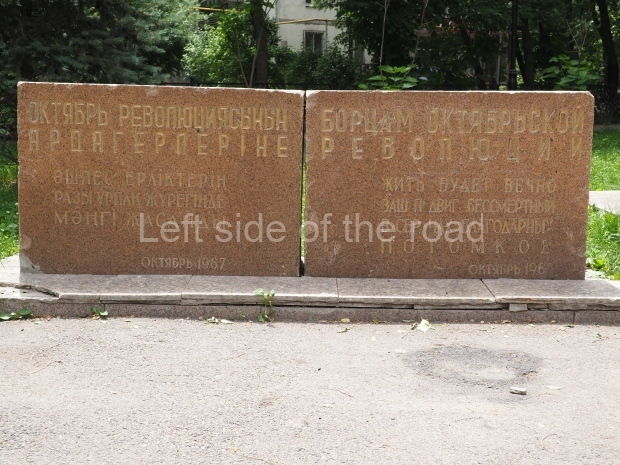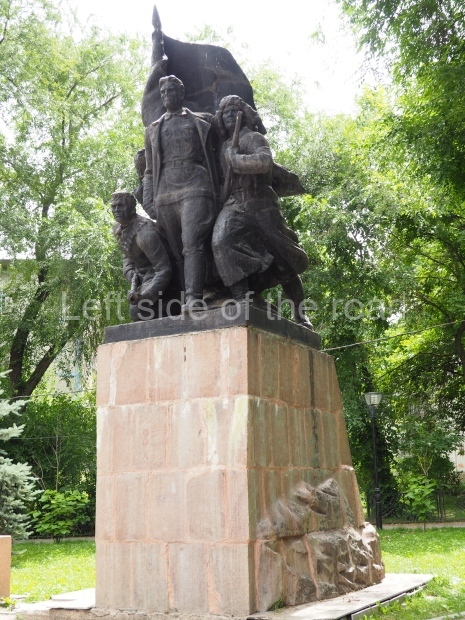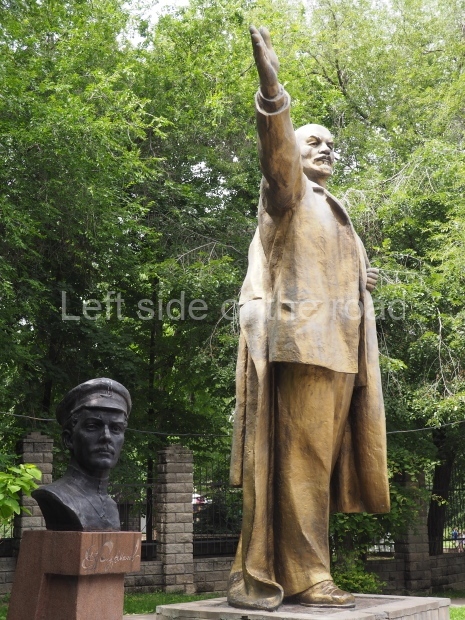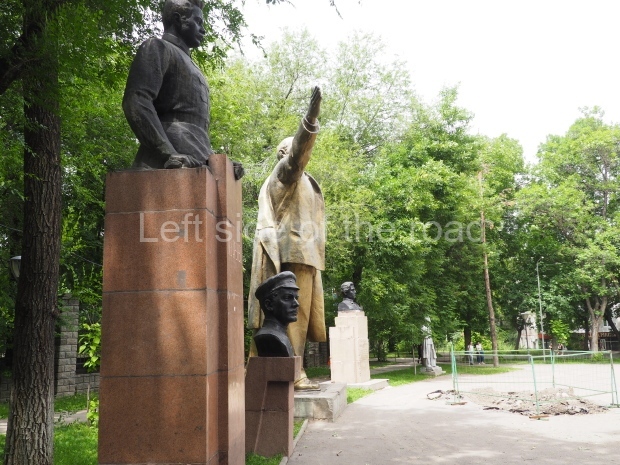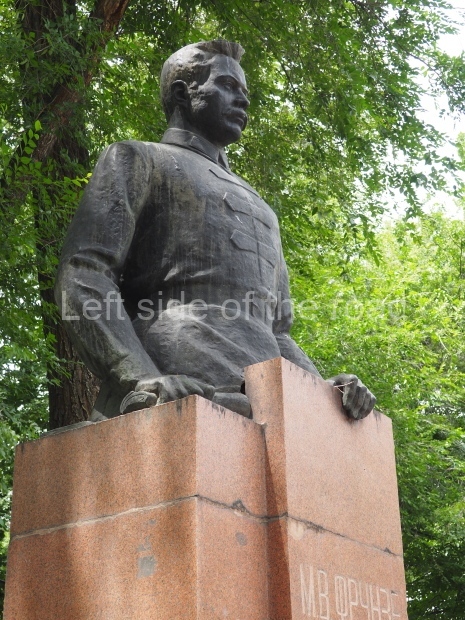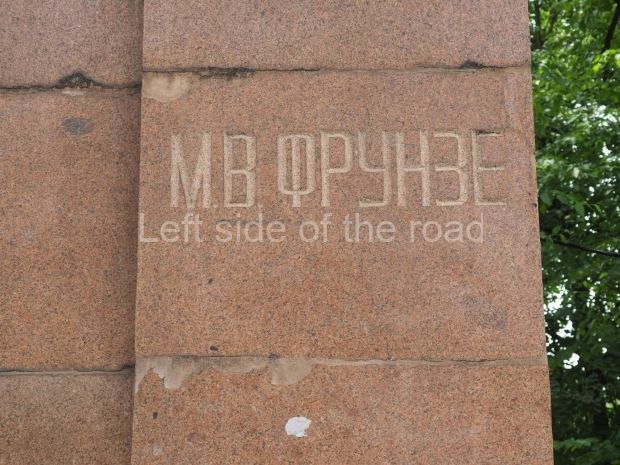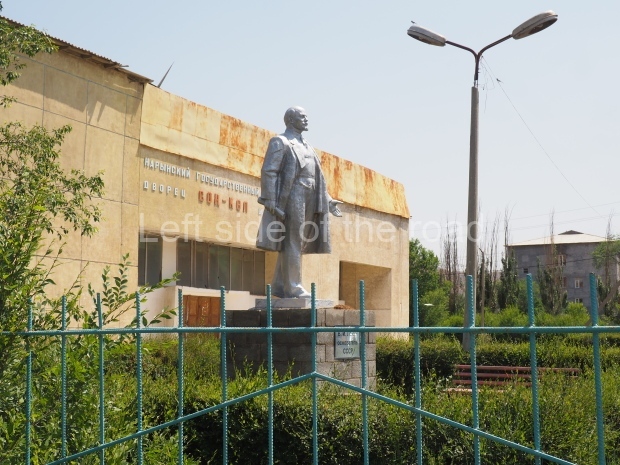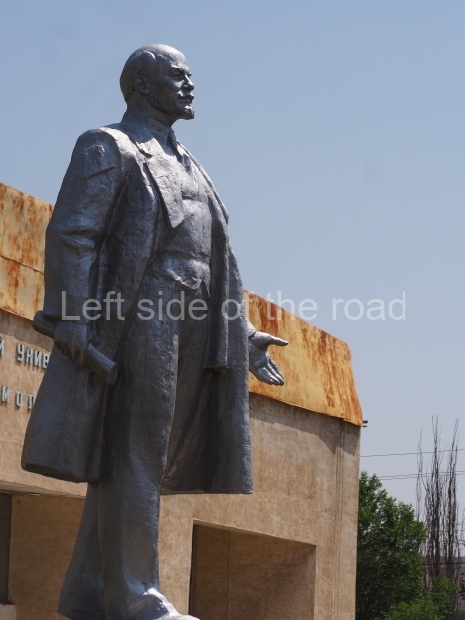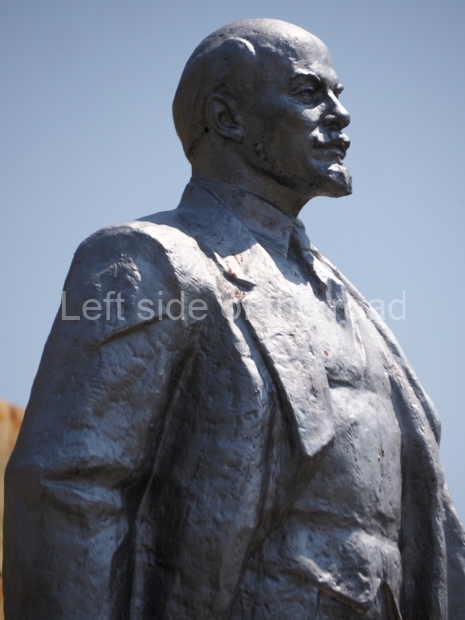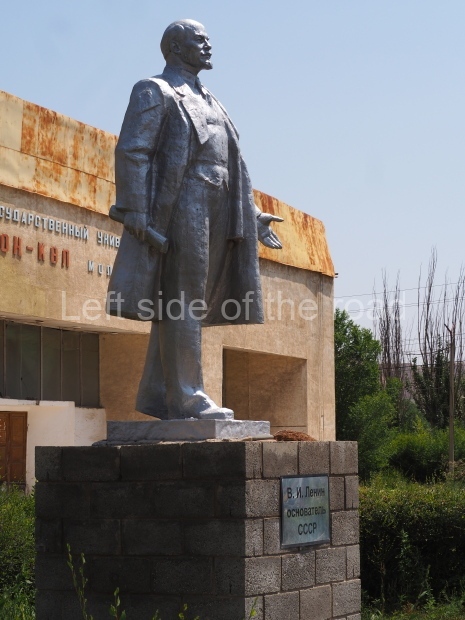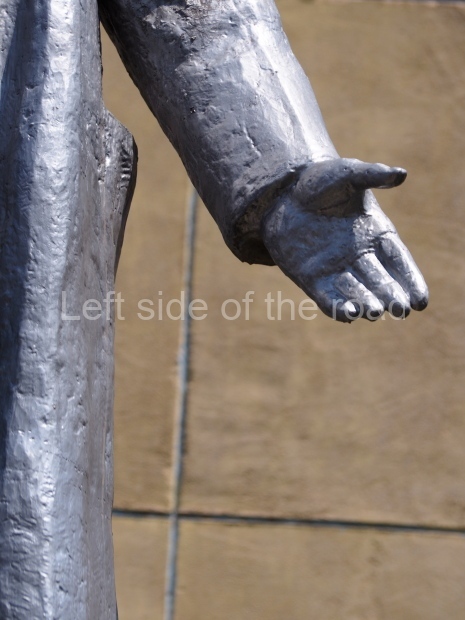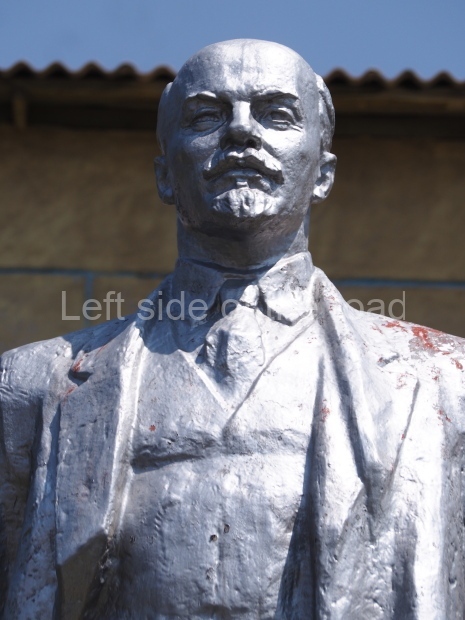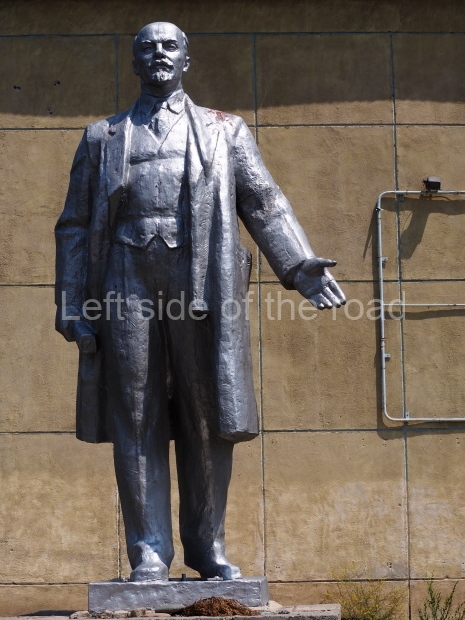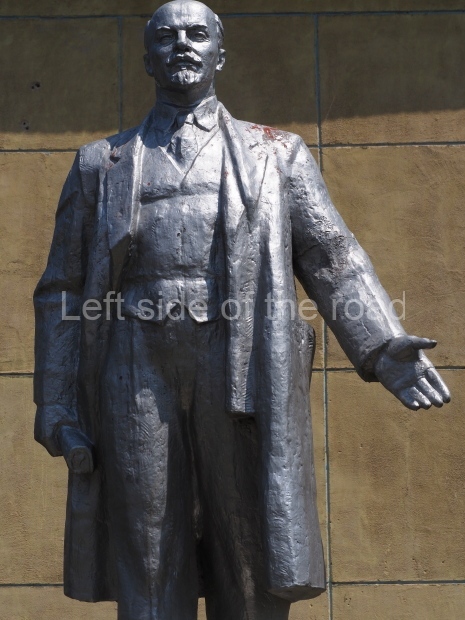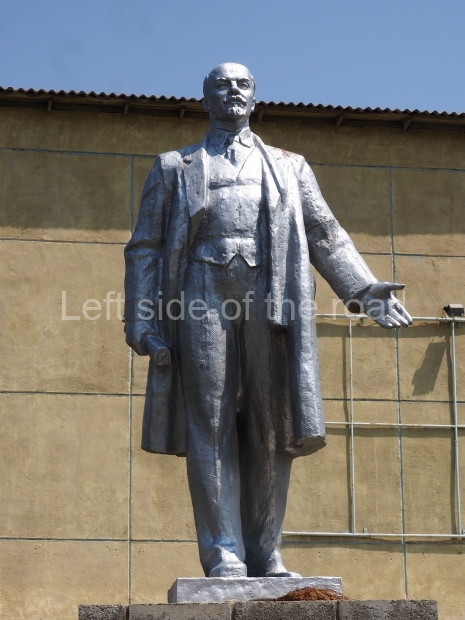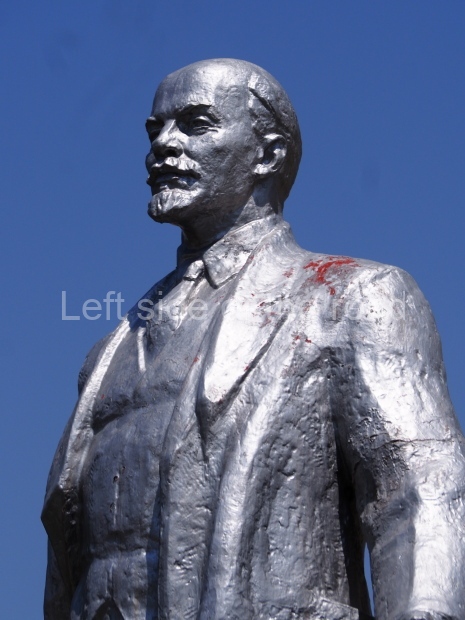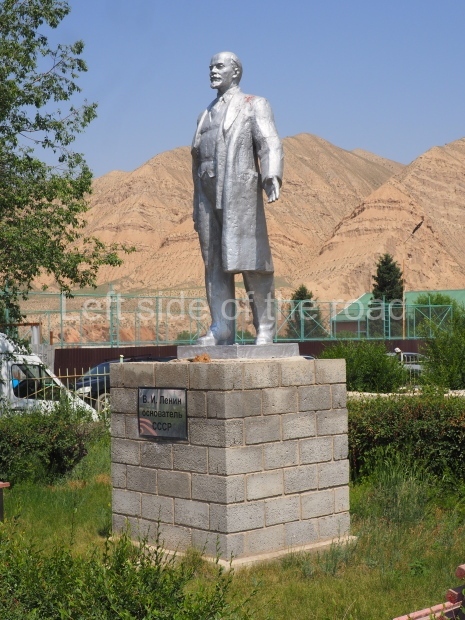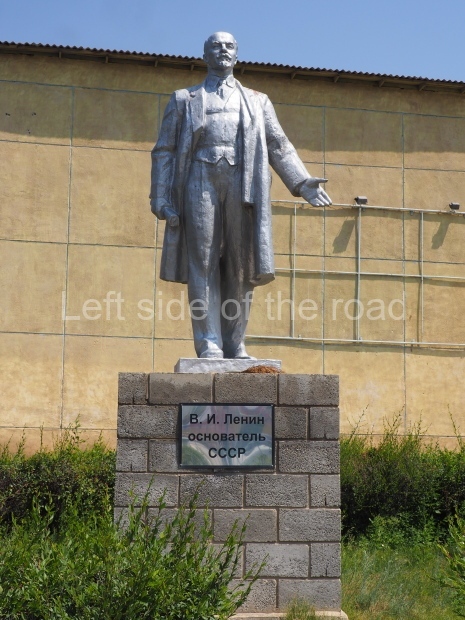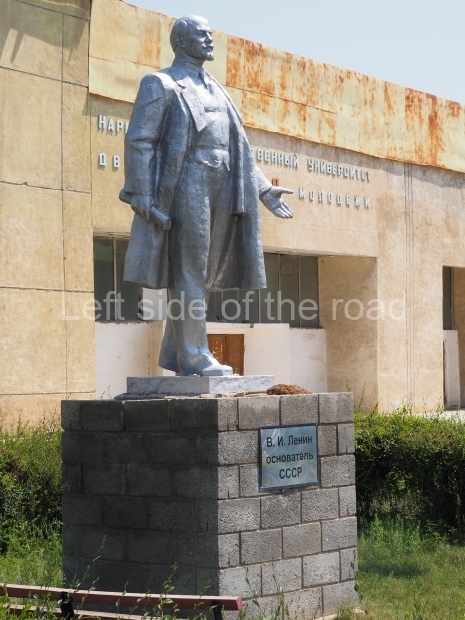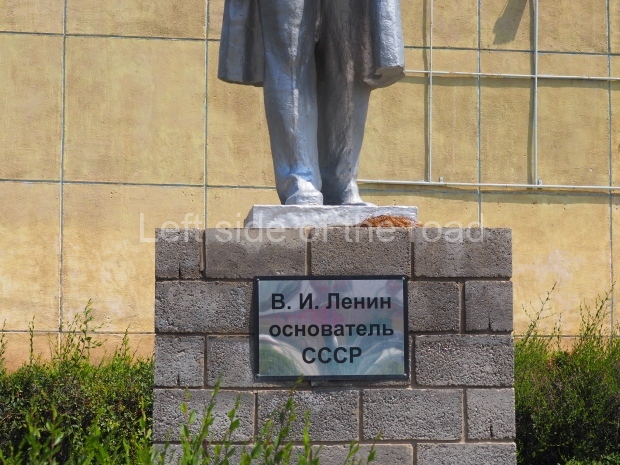
VI Lenin – with friends
VI Lenin and friends in Family Park – Almaty – Kazakhstan
When the capitalist authorities of Almaty decided to relegate the monuments of Socialism to the sidelines they didn’t do as they did in Moscow – where a part of a park by the river was set aside for the Muzeon Art Park – or in Sofia – where the Museum of Socialist Art was established. No, the Kazakhs decided to use the space behind a popular cinema in the city’s biggest public park.

VI Lenin
VI Lenin
This is one of the bigger remaining examples of Lenin statues. It bears some similarity with that which is in the small, narrow park behind the Semey Hotel in Semiplatinsk, to the north east of Almaty. There’s a similarity in size and also in the manner in which Vladimir Ilyich is presented. He is standing and is obviously in the course of giving a speech out in the open, in the winter – VI Lenin was renown for going to the workers and making his arguments at factory gates – as he is wearing a large overcoat over his suit. What is significantly different between the two statues is that in Almaty he has carelessly thrown his overcoat off his right shoulder and the edge of it is brushing against the ground. Also, this statue has been subjected to the ‘golden treatment’ and it is now this unnatural colour, not, I’m sure, as it was originally intended.

Maxim Gorky
Maxim Gorky
There’s a very informal of the Soviet writer Maxim Gorky. He is depicted standing outside in the street; dressed in a suit and overcoat (which is open); with his right hand on his hip and his pork pie hat hanging down from his relaxed left arm. It’s as if he’s waiting to meet someone. Whilst waiting someone attacked him with silver paint.

Pavel Mikhailovich Vinogradov
Pavel Mikhailovich Vinogradov
Also in the group is someone of whom I had not heard before. Pavel Vinogradov was a Bolshevik before the outbreak of the First World War. He was eventually arrested for his revolutionary work and sent to the front but he survived that and after the revolution and civil war worked as a Commissar responsible for education in Tashkent. In March 1919 he was a delegate to the 8th Congress of the RCP(b). He later lived, and then died in Alma-Ata (the old name for Almaty) in 1932. His bust sits upon a stone plinth where information of his background is displayed.

Dmitry Andreyevich Furmanov
Dmitry Andreyevich Furmanov
Furmanov was a writer, revolutionary and also took part in military campaigns in the Civil War. After the Revolution he worked in the propaganda department in the Yaroslavl District before heading off to take an active, fighting, part in the Civil War on the Turkestan Front. He died of meningitis in 1926. His most famous written work (which was translated into English in 1940) was a novel about Vasily Chapaev, a Red Army Commander in the Civil War. His image is depicted in the uniform as an officer in the Red Army with his ornate signature carved into the marble of the plinth.

Mikhail Frunze
Mikhail Frunze
Frunze was a revolutionary who rose to prominence in the struggle against the White reactionary (and imperialist supported) forces during the Russian Civil War, eventually becoming commander of the entire Eastern Front. He later was elected to the Central Committee of the Russian Communist Party and later to its Politburo. His influence in military matters was such that his name was given to the most respected Soviet Military Academy. He is depcited as if giving a speech at a podium, the marble plinth doubling as that podium. There’s a museum dedicated to Mikhail Frunze in the Kyrgyzstan capital, Bishkek.

Monument to the October Revolutionaries
Monument to the October Revolutionaries
This group sculpture was commissioned to celebrate the 50th Anniversary of the October Revolution in 1967 and was originally installed at the top end of the wide, tree-lined avenue that is Pushkin Street. (I don’t know when it was moved here.) It depicts revolutionaries of various ethnicities defending the Red Banner, demonstrating the multi-ethnic nature of the Socialist, October, Revolution.

Mikhail Kalinin
Mikhail Kalinin
Facing VI Lenin, at the opposite end of the small avenue formed by young trees and wooden benches, stands a statue of Mikhail Kalinin. Kalinin was a long time Bolshevik, having been a Party member at the time of the 1905 Revolution. After the Revolution he became the first, titular Head of State, being Chairman of the Presidium of the Supreme Soviet of the Soviet Union, until his death in 1946.
There’s also a now empty platform but I have no idea what might have stood there.
How to get there;
The exit from Saryarka Metro station is right at the main entrance to the park. Go though the arch and keep to the right as you enter the park, passing the collection of military vehicles and the amusement park on your right. You’ll start to see the statues through the trees on your right hand side.
Location;
Located in a small spur of the northern edge of Family Park.
GPS;
43.227245 N
76.856266 E


